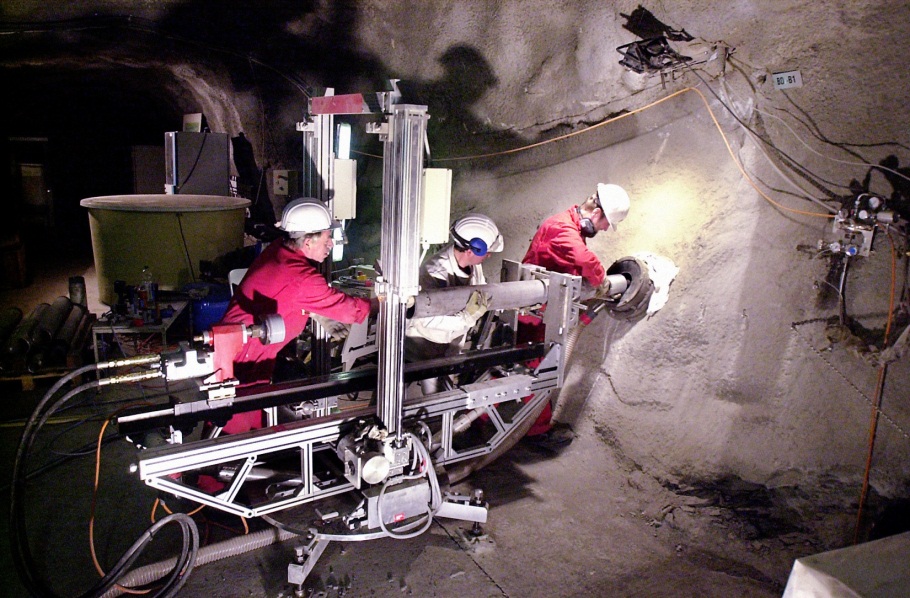Linked Projects
The Mont Terri Project is an international research project for the hydrogeological, geochemical and geotechnical characterization of a clay formation (Opalinus Clay).
The Mont Terri rock laboratory lies north of the town of St-Ursanne in the canton of Jura. The research facilities are located at a depth of 280 m below the surface and are accessed through the security gallery of a highway tunnel, which passes through the Jura mountain range. The research galleries in the Opalinus Clay layer have a total length of ca. 700 m. The Mont Terri rock laboratory offers a scientific and technical platform for international collaboration, mainly in the field of deep geological disposal. The experiments at Mont Terri are dedicated to investigate the properties of a pristine claystone, the Opalinus Clay, its perturbation when an underground opening is constructed, the early and late time interplay of engineered barriers and the natural claystone barrier, and ultimately the understanding of the migration of radionuclides at varied length (near and far-field) and timescales. The Swiss Geological Survey at swisstopo is responsible for operation of the facility and directs the international Mont Terri project. Sixteen organizations from Belgium, Canada, France, Germany, Japan, Spain, Switzerland, and the USA, all of which are considering clay formations as potential host rocks for deep geological disposal of radioactive waste, are involved in the underground (in situ) experiments.
 Mont Terri (Foto: BGR)
Mont Terri (Foto: BGR)
In order to meet global and national ressource supply challenges, hydrometallurgical and especially biohydrometallurgical approaches to metal winning will have to play an important role in future. Therefore, TU Bergakademie Freiberg (TUBAF) with funding by the Dr.-Erich Krüger foundation established the Biohydrometallurgical Center for Strategic Elements (“BHMZ”) as a Krüger Research School to forward interdisciplinary research along the whole (bio-)hydrometallurgical process chain. This comprises bringing the respective metal from the respective source material (deposits, tailings/heaps, recycling material) into aqueous solution and various approaches to obtain pure metal or metal-containing materials of interest from the solution.
